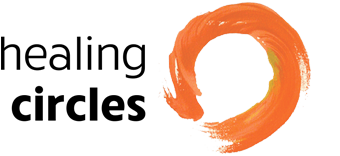A Healing Circle for Supporters
Background: We started our healing circle for supporters in January 2019. We meet monthly, and we host between nine to 14 people. Most of our supporters are partners or spouses of people with cancer because Callanish focuses specifically on people dealing with a cancer diagnosis. Two staff members host the circle—me (a therapist who had a cancer diagnosis in 2015) and another staff member who has experience as a supporter. Our circle participants hear about the circle through personal outreach, our calendar of events, and the monthly emails we send to the Callanish community.
On the supporter role: Supporters in our circle are generally pretty clear about their roles and deal with a lot of complexity and logistics. The idea of asking for help for themselves is much more in the background. “It’s not really about me,” they say. “I don’t have cancer.”
On meeting their own needs: A few people came to just one circle and didn’t return. They seemed to be uncomfortable with sharing and being vulnerable. Perhaps they were just not ready to delve into the issues that others in the group were discussing. Supporters are doing the best they can in the moment, and finding the right way to look after themselves is unique to each individual.
On grief and transition: Whether discussed directly or indirectly, supporters in the group are dealing with grief all the time and in different stages. Some are dealing with a new diagnosis, a change in the course of the cancer, or nearing the end of life. Overall, they experience a profound change in expectations about what their life will be like. A supporter carries that grief like “carrying a big hiking pack to go camping, but can never put down.” There is sadness about all those transitions. Others on the periphery of their situation don’t understand the intricacies of caregiving and the layers of grief, and they sometimes offer observations on how well things are going without knowing the complexities.
On death: One supporter experienced the death of her wife while being a member of the group. This was our first death in the circle. We made a ritual for her by lighting two candles and group members shared comments and messages of support. It was beautiful.
On healing circles: The supporter circle is conducted using the same structure and process as our circle practice at Callanish, and we also experience the depth of sharing and vulnerability of the circle members. The circle format provides the foundation for them to do their work because the circle creates safety, and the participants share a mutual understanding and foster deep connections. One difference is that the participants are not ill, so the energy level feels different.
On starting a supporter circle: We created a safe space for supporters and spread the word within our community. As hosts, we take a back seat in the process and let the circle do the work—with minimal structure, the participants are creating their own healing and meeting their own needs. It’s not about teaching them anything about being a supporter; rather, they support and guide each other.




